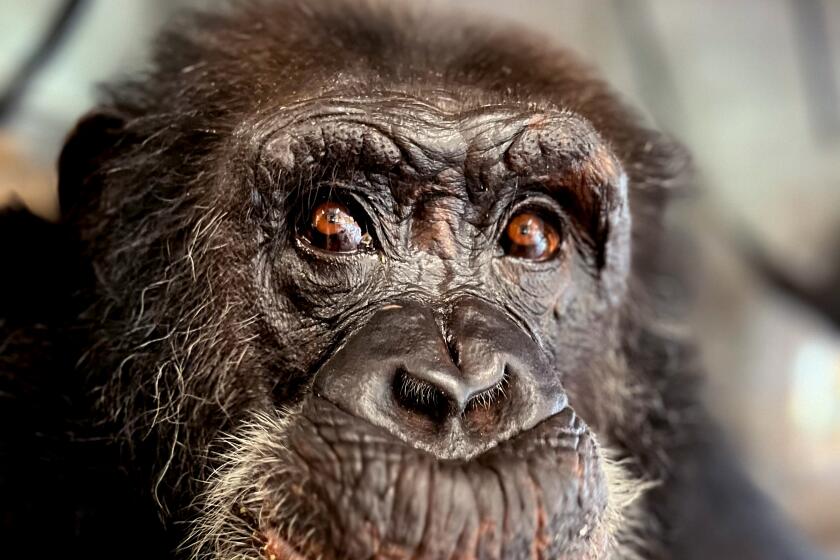Visual ventriloquist
BERKELEY -- Enrique Chagoya is a savvy, rambunctious and surprisingly respectful thief. He takes what he needs from the general store of art history and uses it to furnish his own aesthetic. He plucks a few cartoon superheroes off the shelf, sets them among Aztec gods, borrows some settings from Goya, the soup can motif from Warhol, a color scheme from Russian revolutionary propaganda, a handful of icons from the Catholic Church, a touch of Disney. He plays freely with the goods, contriving surprises and generating friction. Throughout, he uses humor as a weapon against a multitude of wrongs.
A 25-year survey of Chagoya’s work at the UC Berkeley Art Museum flaunts the artist’s versatility and his impassioned embrace of hybridity. In paintings, drawings, prints and scroll-style or accordion-fold books, Chagoya addresses specific cultural or political incidents as well as the broader dynamics of encounter and conquest, the use and abuse of power. At its best, the work is brilliant. When he falters, it feels loud but thin, all insistence and no nuance. His most recent paintings are the most disappointing in this respect, but there are not enough of them to drag down an otherwise ebullient display of intelligence and talent.
The show, “Borderlandia,” was organized by Patricia Hickson for the Des Moines Art Center, where it opened, and will travel in September to the Palm Springs Art Museum. It comes with a handsome catalog, the largest publication of Chagoya’s work to date.
Born in Mexico City, Chagoya moved to the U.S. in 1979 after studying political economics in college. His social conscience was catalyzed, he recalls, by the Tlatelolco massacre of 1968, when Mexican police fired on student demonstrators in the capital, and by the government’s suppression of the nature and extent of the violence. He settled in the Bay Area, earned a master’s in fine arts at UC Berkeley and has been teaching art at Stanford since 1995.
The exhibition presents Chagoya’s work in clusters, according to theme or medium, rendering a sense of chronological development both elusive and irrelevant. Cannibalism -- literal and metaphoric -- comes into play repeatedly. An image of Aztecs making a meal of former Gov. Pete Wilson spoofs a stereotype of primitive savagery. Each figure holds up an ear, a heart, a tongue, a penis or a brain before digging in, and a bound and sweating Mickey Mouse is also being seasoned for the feast. In the picture, “The Governor’s Nightmare” has come true: Our neighbors south of the border have taken over and are subsuming and consuming all that is powerful and precious in our state.
Chagoya painted the scene in 1994 on paper made from amate, a wild fig bark used by the Aztecs as a drawing surface. The paper has a thick, slightly rough texture, and Chagoya has smudged its ivory surface liberally with blood-red paint, as if a transcription of the event had been made on the spot, by a participant.
He also uses amate paper as the base for many of his codices -- dazzling epics of densely compressed history. Horizontal spreads of joined pages, the books are meant to be read from right to left, like the few Mixtec and Maya originals that survived the Spanish conquest. They don’t present conventional linear narratives, however. Instead, they unfurl in a controlled gush of intelligent outrage, riffing on myths of arrival, objects of worship both spiritual and commercial, and violation of all sorts -- physical, cultural, religious, political, artistic.
In another canny body of work, Chagoya answers the question “What would Goya draw?” He re-imagines the print series “Los Caprichos” and “The Disasters of War” set in the present, featuring familiar public figures (including Monica Lewinsky and former Ku Klux Klan Grand Wizard David Duke) faithfully transcribed in Goya’s own style and compositions.
The patina of age and the authenticity of materials contradict the contemporary references and yet reinforce them: The historical elements feel as though they endure into the present, and the current events feel like extensions of older, established patterns. Anachronism is one of Chagoya’s best-used tools. It startles, tickles, informs and disarms, putting us in the place of Superman, who, in a frame from one codex, stands beside a complex knot of pre-Columbian imagery -- gods, warriors, symbolic patterns -- and exclaims, “Hey! Hold on! I’ve got a million questions!”
Chagoya paints himself into his scenes occasionally, and he acts the artistic cannibal in part to bring attention to the way artists of European heritage have long poached on the artistic legacies of cultures they have also dominated politically. The hierarchy shifts in Chagoya’s hands -- he calls what he does “reverse anthropology.” The work can feel wonderfully edgy and irreverent -- distorted maps finally redrawn, the greedy getting their due -- or just plain amusing, like a cartoon with well-aimed barbs: George W. Bush and his first Cabinet drawn as the seven dwarfs, under the bitter watch of then-National Security Advisor Condoleezza Rice as Snow White.
Chagoya is a satirist in the tradition of Daumier and Hogarth and in the good company of his Southern California peers Sandow Birk and Einar and Jamex de la Torre. He practices an adept visual ventriloquism, assuming the voices of countless artists across the centuries and the continents. What makes his thievery so unusual, so smart and so compelling is that he gives back as much as he takes.
--
‘Enrique Chagoya: Borderlandia’
Where: UC Berkeley Art Museum & Pacific Film Archive, 2626 Bancroft Way, Berkeley
When: 11 a.m. to 5 p.m. Wednesday through Sunday
Ends: May 18
Price: $8
Contact: (510) 642-0808 or www.bampfa.berkeley.edu
More to Read
The biggest entertainment stories
Get our big stories about Hollywood, film, television, music, arts, culture and more right in your inbox as soon as they publish.
You may occasionally receive promotional content from the Los Angeles Times.










